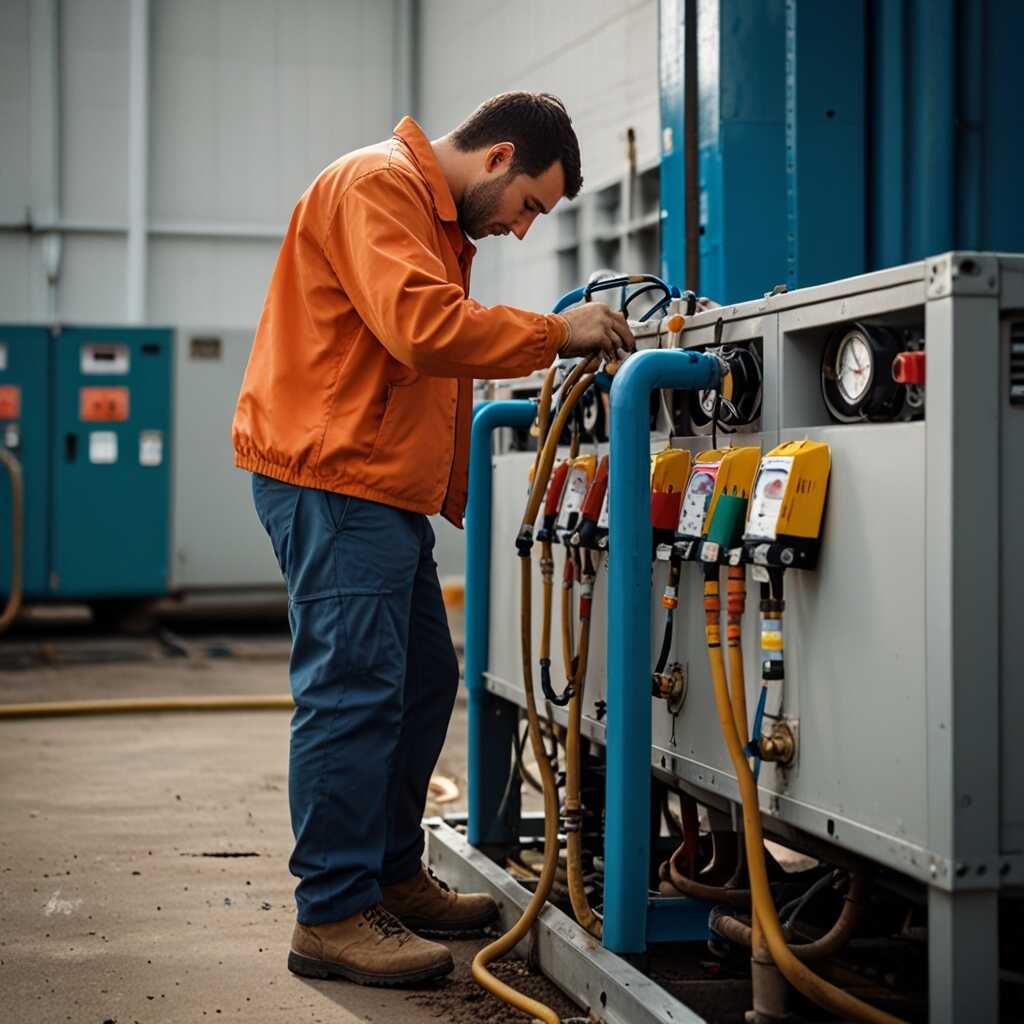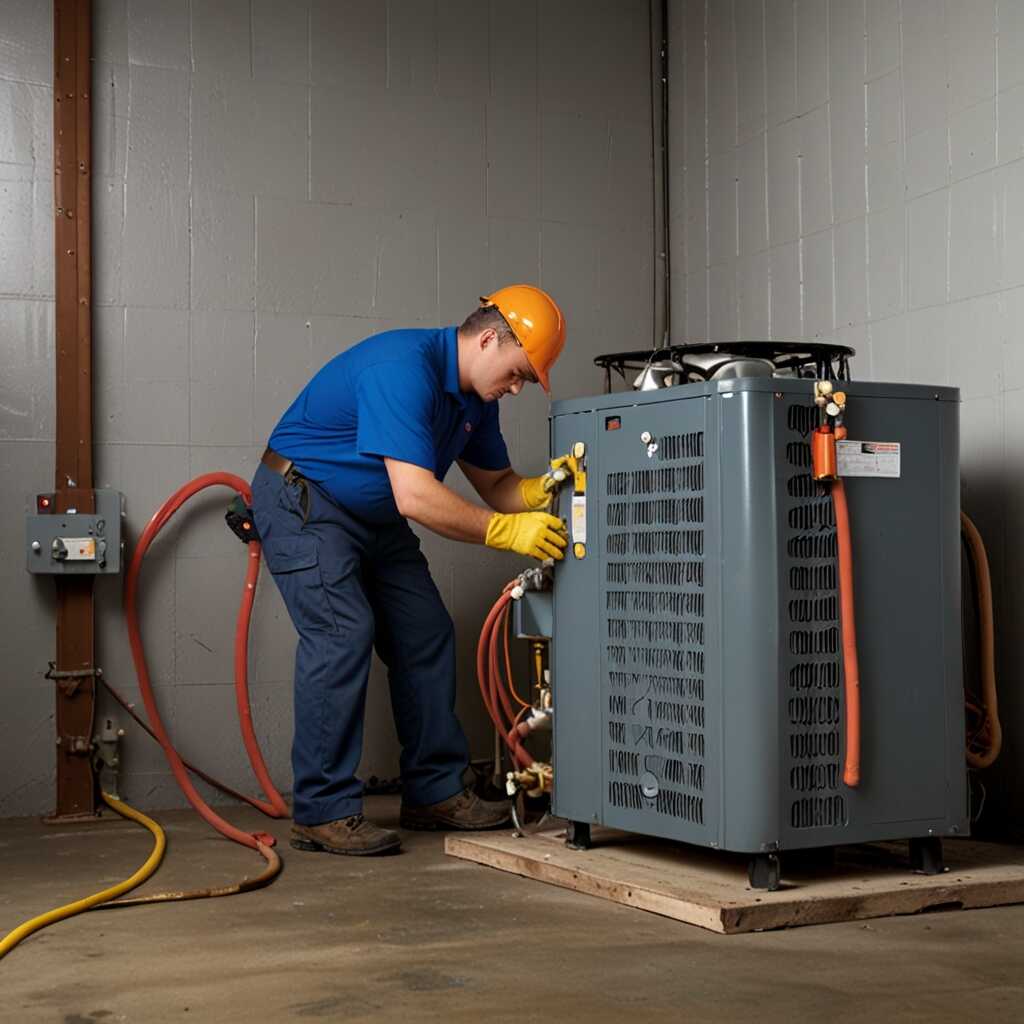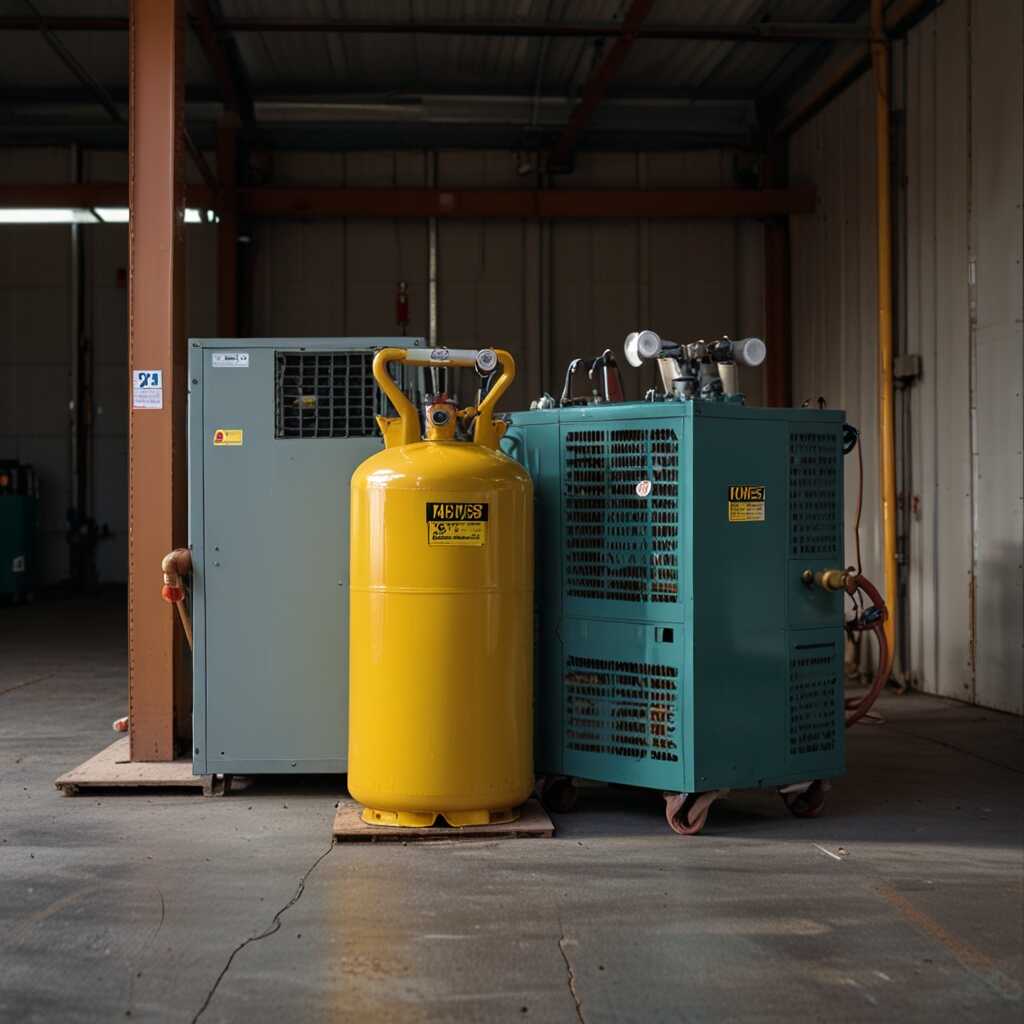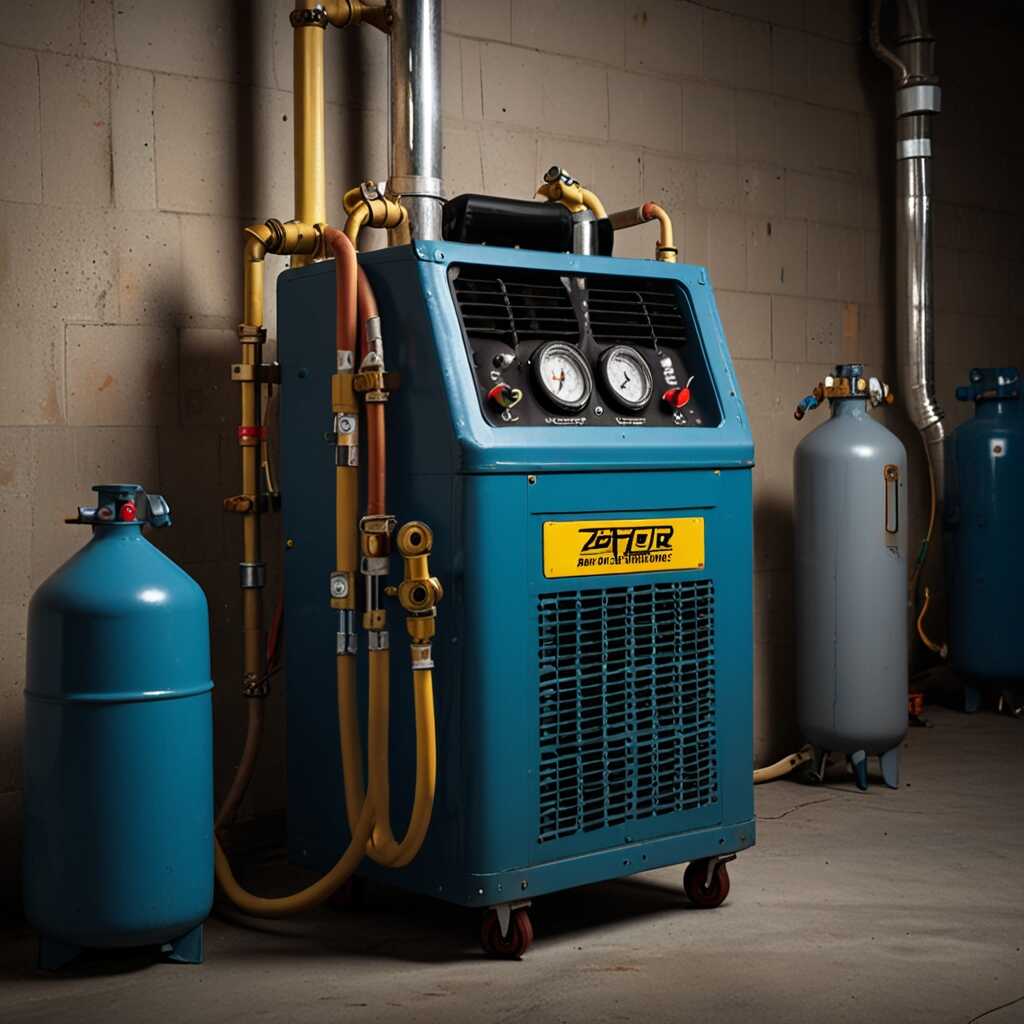The automatic shut-off features in refrigerant recovery units are essential for preventing tank overfill. These devices ensure safe and efficient refrigerant management during recovery processes. Understanding how these features work can help HVAC technicians and refrigerant recovery professionals enhance safety and compliance. At Refrigerant Recovery Pro, we offer guidance on these critical systems, emphasizing the importance of reliable automatic shut-off mechanisms in refrigerant recovery units.
Understanding Automatic Shut-Off Features in Recovery Units
Automatic shut-off features in refrigerant recovery units are designed to prevent overfilling by stopping refrigerant flow when a tank reaches capacity. These features typically utilize pressure sensors and electronic controls to monitor tank levels. When the pressure exceeds a pre-set limit, the system automatically shuts off, ensuring safety and preventing spills. The benefits of these features include improved reliability and efficiency across various models. Proper testing shows that these systems activate quickly, often within seconds, ensuring effective operation that protects users and the environment.
How Pressure Sensors Work in Recovery Units
Pressure sensors are critical components in automatic shut-off features, enabling rapid detection of refrigerant levels. They measure pressure changes within the recovery tank. An increase above the set threshold triggers the shut-off mechanism. This process enhances operational safety by reducing the risk of overfilling during recovery. High-quality performance relies on reliable sensors that undergo rigorous testing and review. Regular maintenance helps maintain their accuracy, ensuring long-lasting functionality in refrigerant recovery units used by HVAC professionals.
Risks Associated with Overfilling Refrigerant Tanks
Overfilling refrigerant tanks presents significant safety hazards and environmental concerns. Excess refrigerant can lead to dangerous pressure buildups, resulting in leaks, explosions, or system failures. Inadequate pressure regulation can expose technicians to harmful refrigerants, affecting both health and safety. The environmental impact includes potential harm to the ozone layer and contribution to global warming due to leaks of greenhouse gases. These risks emphasize the critical need for effective shut-off systems in refrigerant recovery units, ensuring productivity and compliance with environmental regulations.
Understanding Shut-Off Mechanisms for Safety
Shut-off mechanisms in refrigerant recovery units are designed to enhance safety by stopping the filling process when maximum capacity is reached. Most reliable units incorporate pressure sensors that detect when tanks near their limit, preventing overfilling. Regular maintenance and testing are essential for ensuring these systems function correctly and consistently. Technicians should also review the operational manuals that provide insights into the best practices for using shut-off features effectively. An operational shut-off system not only safeguards personnel but also contributes to compliance with federal and state environmental regulations.

Key Components Supporting Automatic Shutdown Systems
The primary components of automatic shut-off systems in refrigerant recovery units include sensors, valves, and control systems. Sensors detect the refrigerant levels and trigger actions to prevent overfilling. Valves are designed to close at a specific refrigerant level, while control systems process the data from sensors to initiate the shut-off action. Together, they enhance reliability and efficiency during operation, ensuring safe and effective refrigerant management. Users should regularly check these components for proper functioning to maintain performance.
Understanding the Role of Sensors in Refrigerant Recovery
Sensors play a crucial role in automatic shut-off systems for refrigerant recovery units. They monitor the refrigerant levels and provide real-time data to the control systems. When levels reach a predetermined threshold, the sensors send signals to actuate valves, preventing overfill. High-quality sensors designed for durability enhance performance and reliability. Proper sensor calibration ensures accurate readings. Technicians must conduct regular tests to verify that sensors operate efficiently, as proper functionality directly impacts the safety features of the equipment.
Key Figures About Safety Mechanisms in Refrigerant Equipment
- Up to 85% of refrigerant recovery units feature automatic shut-off systems.
- Units can recover refrigerant at rates of up to 15 pounds per minute.
- Industry regulations require that tanks hold no more than 80% of their capacity.
- Automatic shut-off features reduce overfill incidents by approximately 90%.
- Systems designed with auto shut-off can extend equipment lifespan by up to 30%.
- Training programs for technicians on these features have increased by 40% in the last three years.
- Proper use of these systems can lead to a reduction in illegal venting by nearly 25%.

How Shut-Off Features Promote Worker Safety
Automatic shut-off features are essential for preventing overfilling during refrigerant recovery. These features enhance worker safety by ensuring that tanks do not exceed their capacity. They include advanced sensors that monitor tank levels. When tanks approach their limit, the system automatically shuts off, preventing spills and potential hazards. These reliable features help reduce accidents and protect HVAC technicians from exposure to harmful refrigerants. Effective safety measures create a safer work environment and minimize risks related to refrigerant management.
Key Benefits of Automatic Shut-Off Features
Automatic shut-off features provide numerous benefits for HVAC operations. They significantly improve efficiency by eliminating the need for manual monitoring of tank levels, allowing technicians to focus on other tasks. These features undergo rigorous testing to ensure reliability and performance. Research indicates that they can reduce overfilling incidents by up to 75% by 2025. This reduction in incidents not only enhances worker safety but also contributes to better environmental compliance. Working with equipment that includes these features gives HVAC professionals peace of mind, knowing they are using reliable and safe systems.

Industry Regulations on Refrigerant Recovery Procedures
Understanding the key regulations governing refrigerant recovery procedures is essential for HVAC professionals. Agencies such as the Environmental Protection Agency (EPA) set stringent rules ensuring safe and efficient refrigerant recovery. Compliance with these regulations helps prevent environmental damage. Organizations involved include the EPA, industry groups, and regulatory bodies. HVAC technicians must stay updated with the latest requirements in refrigerant management. For example, they must be aware of certifications needed, including Section 608 compliance. These certifications will dictate how many pounds of refrigerant can be recovered from a system before further actions are needed.
Essential Best Practices for Compliance and Efficiency
Implementing best practices for refrigerant recovery is crucial for compliance and operational efficiency. Professionals should regularly review refrigerant recovery regulations and ensure their equipment meets the operational standards. This includes using reliable and durable recovery units equipped with automatic shut-off features to prevent overfilling tanks. Technicians are encouraged to document the recovery process systematically, ensuring accurate records for compliance audits. Regular training and certification updates help maintain proficiency in handling refrigerants. Following these practices not only enhances safety but also contributes to environmental protection and regulatory adherence.
Advantages of Using Safety Features in Recovery Units
- Automatic shut-off mechanisms greatly enhance user safety during operation.
- They help maintain compliance with environmental regulations and standards.
- Such features minimize the risk of costly refrigerant losses from overfilling.
- They reduce the need for constant manual monitoring, saving technicians time.
- Users experience less wear and tear on their equipment, leading to lower maintenance costs.
- Safer operation leads to increased confidence among HVAC technicians.
- Enhanced reliability can improve overall job performance and customer satisfaction.

Effective Techniques for Using Refrigerant Recovery Units
Understanding the refrigerant recovery workflow is crucial for HVAC professionals. Start by ensuring proper setup of your unit to enhance operational compliance. Regular equipment reviews help ensure that your unit runs at peak performance. Familiarize yourself with safety practices, including the need for personal protective equipment. Keep accurate records of each job, as this helps maintain compliance with regulations. Reviewing various units will inform decisions on features and performance, ensuring you select models that can handle your specific needs.
Optimizing Your Refrigerant Recovery Workflow
To optimize your refrigerant recovery workflow, choose units designed for high efficiency and reliability. Units vary widely in features and operational compliance, impacting their maximum recovery rates. Research different models through comparison articles to determine which delivers the best results for your application. Look for units that enable fast recovery speeds without compromising safety. Experts recommend a regular maintenance schedule, which improves efficiency and extends the lifespan of your equipment, ensuring reliable performance on every job.
Troubleshooting Common Shut-Off Feature Problems
Common issues with automatic shut-off features in refrigerant recovery units include sensor failures, clogged lines, and power interruptions. Users may notice that the unit does not shut off automatically during operation or fails to restart after being filled. For troubleshooting, check the sensors for debris or damage, ensuring they can accurately detect the refrigerant levels. Additionally, inspect the hoses for any blockages, ensuring unimpeded refrigerant flow. Power interruptions can also hinder performance; ensure all connections are secure and check the power source for reliability.
Understanding Sensor Issues in Shut-Off Features
Sensor issues are critical in ensuring the reliability of the automatic shut-off features in refrigerant recovery units. If the sensors are dirty or malfunctioning, they may not accurately measure the refrigerant level, leading to overfilling. Regular cleaning and testing can help maintain sensor accuracy. Users should follow a scheduled maintenance routine that includes testing the sensors at least every six months. This practice significantly enhances the efficiency of refrigerant recovery operations. Checking manufacturers’ specifications benefits technicians in ensuring they maintain top performance and reliability.
Companies and Their Roles in Refrigerant Management
- The Fieldpiece brand offers portable recovery units ideal for smaller jobs.
- Yellow Jacket systems provide extensive features like automatic shut-off.
- Appion focuses on high-performance recovery for large HVAC systems.
- RecoverX specializes in units that handle multiple refrigerant types efficiently.
- Environmental compliance officers often endorse brands with superior safety features.
- Small HVAC businesses may prefer compact models for their lack of bulky equipment.
- Larger contractors benefit from heavy-duty systems designed for high-volume recovery.
Emerging Technologies in Refrigerant Recovery Equipment
Refrigerant recovery technology continuously evolves to enhance efficiency and user experience. Innovations include smart recovery units that monitor refrigerant levels in real-time. These units prevent overfilling tanks and improve reliability through advanced sensors. HVAC innovations focus on eco-friendly refrigerants and efficient recovery processes. New models in 2025 will showcase features like automated shut-off systems, ensuring better management. Data from industry testing indicates these advancements help technicians reduce refrigerant loss and improve performance. Comparing these new units with older models shows that the enhancements lead to faster recovery times and more reliable operation.
Key Features of Innovative Refrigerant Recovery Units
Modern refrigerant recovery units incorporate several key features designed for optimal performance and ease of use. Units now include advanced automatic shut-off mechanisms that prevent overfilling, ensuring safety and compliance with environmental regulations. Additionally, they feature integrated monitoring systems that provide real-time data on refrigerant levels, enhancing the overall efficiency of the recovery process. Durable materials used in construction ensure reliability and longevity, even in harsh working conditions. The latest units are designed with user-friendly interfaces, allowing HVAC professionals to operate them easily, thus improving productivity and reducing potential errors during recovery operations.